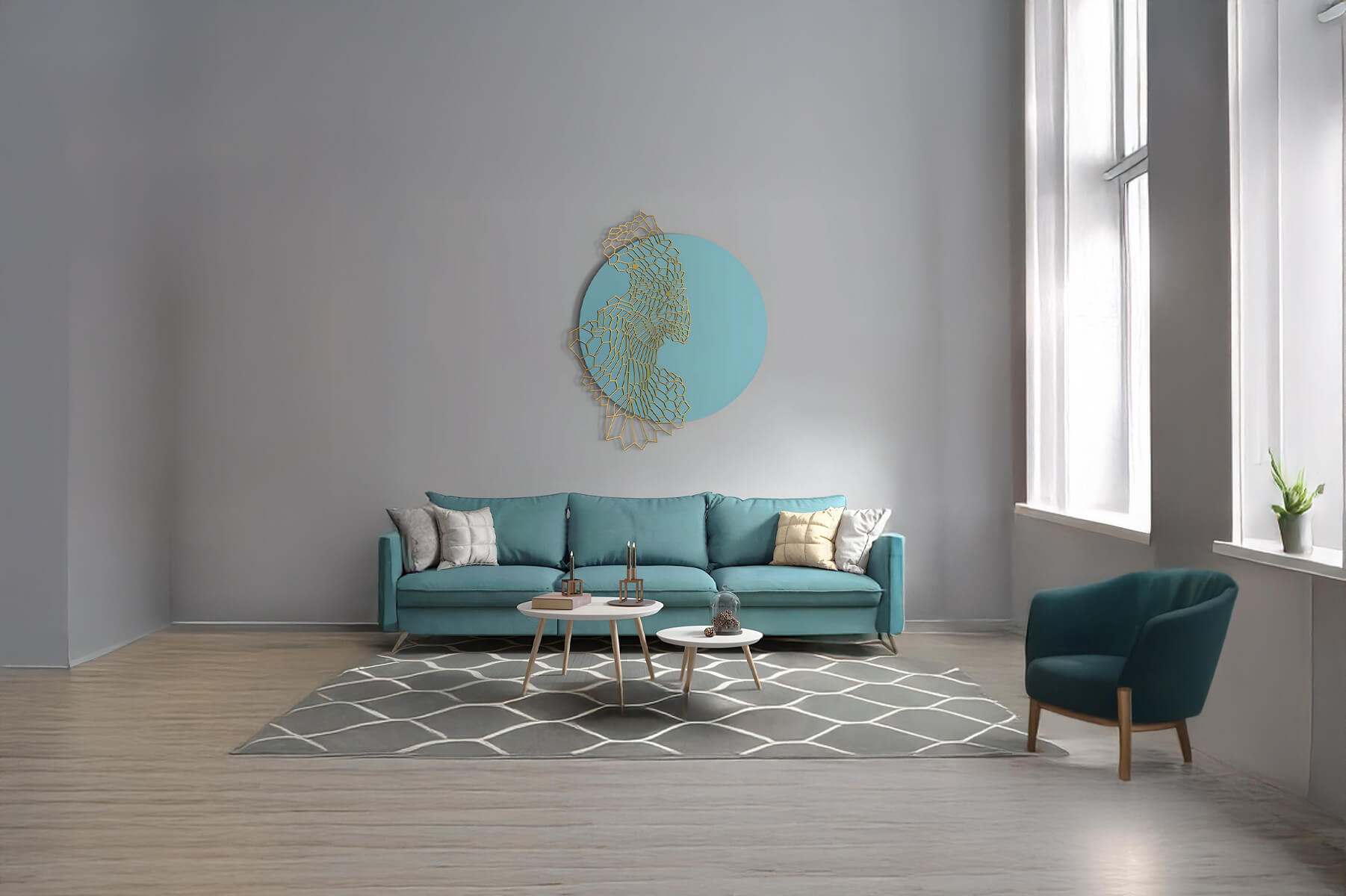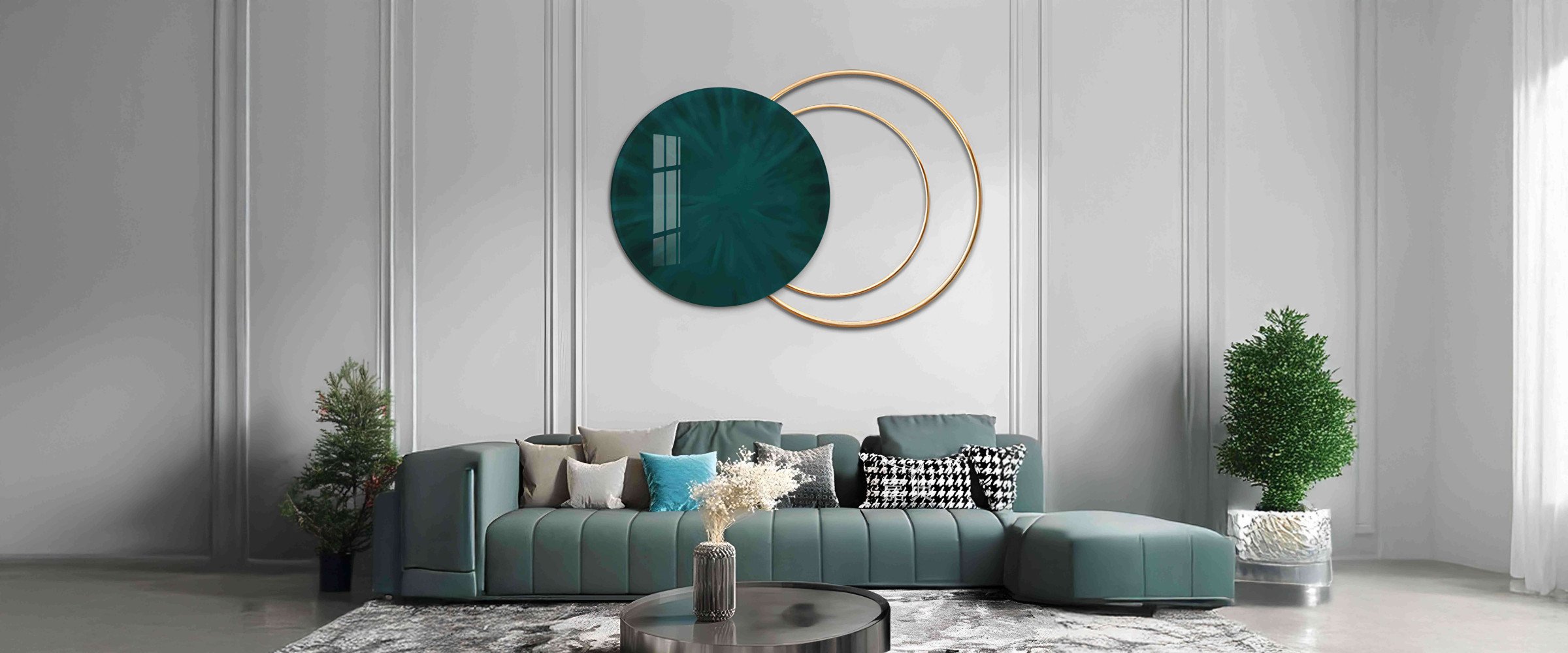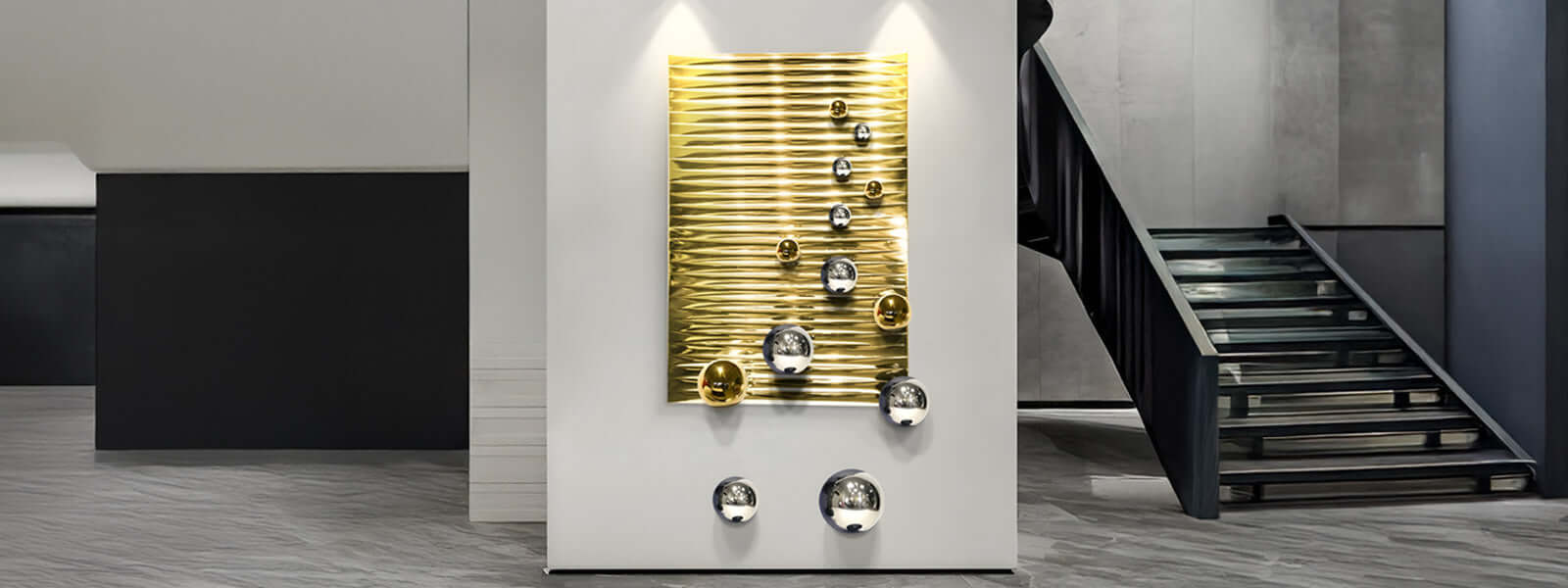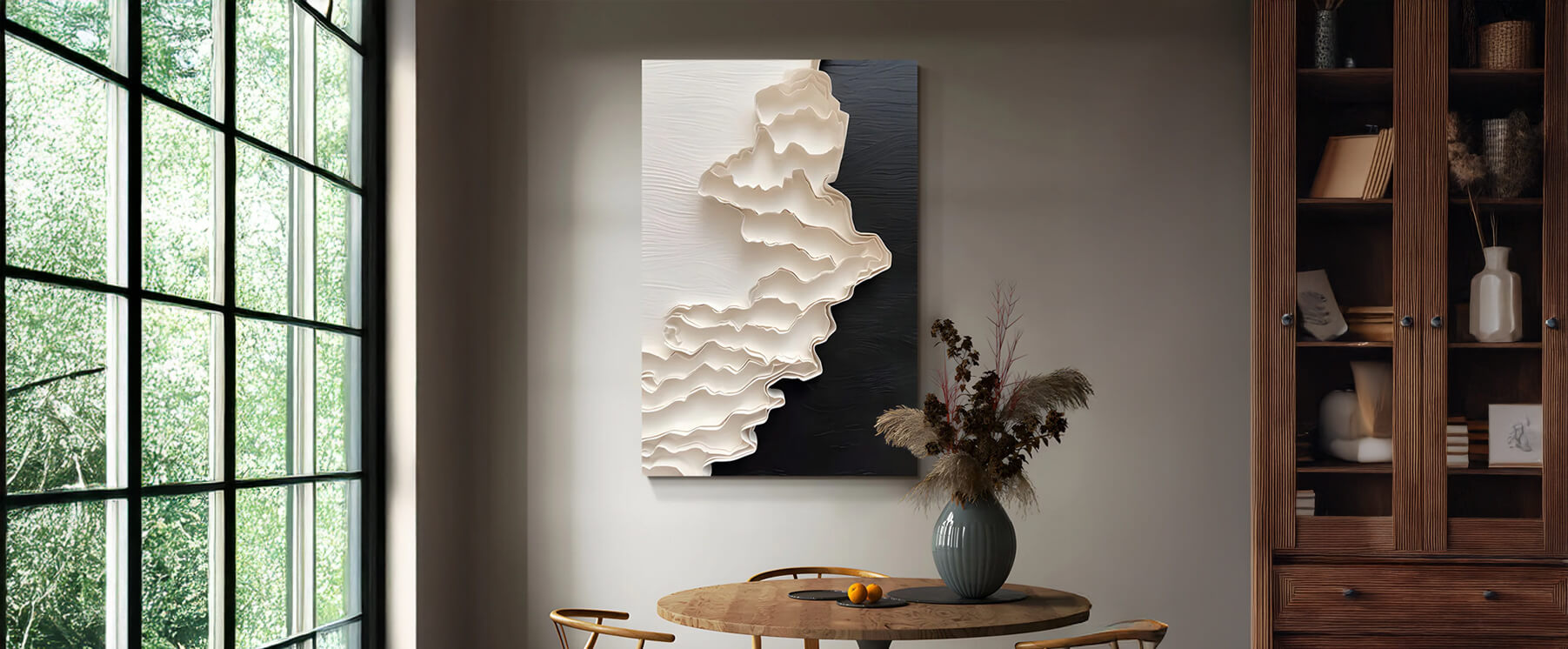Introduction
Geometric art has become a staple in modern interior design, offering a dynamic blend of structure and creativity. Characterized by precise shapes, symmetry, and bold contrasts, geometric patterns seamlessly integrates into various decor styles, from contemporary minimalism to industrial chic. Its versatility allows it to serve as a statement piece or a subtle design element, enhancing the aesthetic appeal of any space.
Adding energy to a living room, creating a calming retreat in a bedroom, or inspiring productivity in an office, the right artwork can elevate a space. This guide explores where to hang geometric art and how to choose pieces that complement different environments.
Living Room Art: Making a Statement with Geometric Art
The living room is often the focal point of a home, serving as a gathering place for family and guests. As such, geometric art in this space should be thoughtfully selected to make an impact while complementing the existing decor.
How to Use Geometric Art in the Living Room
- Create a Focal Point Above the Sofa
A large geometric canvas, a diptych (two-panel set), or a geometric gallery wall can serve as a stunning centrepiece above a couch. The key is to choose artwork that complements the room’s colour scheme and furniture style. Balance with Minimalist or Bold Interiors
- For a modern minimalist living room, opt for black-and-white geometric prints or soft pastels with simple lines.
- In a bold, eclectic space, consider vibrant geometric compositions featuring primary colours or gold accents.
Pair with Furniture and Lighting
Geometric artwork should align with key furniture pieces. A well-placed piece above a console table, fireplace, or TV unit can enhance visual harmony. Additionally, installing wall sconces or a pendant light nearby can highlight textures and depth within the artwork.
Best Placement Tips
- Centre artwork at eye level to maintain balance.
- Use geometric prints to break up large, empty walls in open-plan living rooms.
- Consider framing options-thin black frames for a modern touch or metallic accents for an industrial feel.
With the right selection and placement, living room art featuring geometric designs can set the tone for the entire space, making it feel curated and visually compelling.
Bedroom Art: Creating a Tranquil or Stylish Atmosphere
The bedroom is a personal retreat, and the art within it should contribute to relaxation while reflecting individual style. Geometric art works beautifully in bedrooms, offering either a calming effect through symmetry or a bold statement with abstract patterns.
How to Use Geometric Art in the Bedroom
Above the Bed for Symmetry and Balance
A single large-scale geometric piece or a triptych (three-panel set) above the bed creates a sense of order and harmony.Soft-Toned Designs for a Serene Environment
If relaxation is the goal, choose soft, neutral-toned geometric prints in shades like beige, sage green, dusty blue, or warm greys. These colours promote a sense of calm.Gallery Walls for a Contemporary Touch
A collection of smaller geometric pieces arranged asymmetrically can add a unique, modern aesthetic. Consider incorporating different textures, such as canvas prints, metal wall art, or framed geometric sketches.Aligning with Bedroom Decor
- For boho-inspired spaces, look for geometric patterns with earth tones and organic shapes.
- In luxury interiors, gold-accented or metallic geometric designs can enhance elegance.
- For a Scandinavian look, opt for monochrome or pastel geometric pieces.
Best Placement Tips
- Hang above bedside tables for a balanced effect.
- If using multiple pieces, space them evenly to maintain symmetry.
- Consider LED backlighting to enhance soft geometric designs at night.
Well-chosen bedroom art featuring geometric elements can transform a sleeping area into a harmonious and visually pleasing retreat.
Dining Room Art: Enhancing the Ambiance
The dining room is an often-overlooked area for art, yet it provides the perfect canvas for stylish geometric prints. Hosting a formal dinner or enjoying a casual meal, geometric patterns can enhance the dining experience.
How to Use Geometric Art in the Dining Room
Above the Dining Table for a Sophisticated Look
A centrally placed geometric piece can anchor the space, providing a focal point that complements the dining table and chairs.Matching Dining Room Styles
- For a mid-century modern dining room, opt for retro geometric prints featuring bold patterns and warm tones.
- Industrial spaces pair well with monochrome geometric designs on metal or canvas.
- A contemporary setting benefits from minimalist geometric art in subtle hues.
Layering with Decorative Elements
Pair wall art with stylish table centrepieces, pendant lighting, or textured wall panels to create an elegant ambiance.
With strategic placement, dining room art featuring geometric designs can elevate both formal and casual dining spaces.
Hallway Art: Bringing Energy to Transitional Spaces
Hallways often lack decorative elements, making them perfect for geometric art that adds movement and rhythm.
Best Practices for Hallway Geometric Art
Gallery Walls for Continuity
Arranging multiple geometric prints in a sequence adds cohesion, making a hallway feel dynamic rather than empty.Large, Statement Pieces for Small Hallways
If space allows, one oversized geometric print can make a strong visual impact.Lighting for Emphasis
- LED strips or sconces placed above artwork can enhance depth.
- Spotlights can create dramatic shadow effects, adding dimension.
Adding hallway art ensures that transitional spaces don’t feel neglected but rather integrated into the overall home aesthetic.
Kids Room Art: Playful and Inspiring Designs
How to Use Geometric Art in a Kids’ Room
Bright and Playful Colours
Choose bold, cheerful geometric prints with reds, yellows, and blues to stimulate creativity.Educational and Interactive Elements
Look for geometric designs incorporating numbers, letters, or animals to encourage learning.Wall Stickers and Murals
- Large-scale geometric murals create a playful backdrop.
- Removable decals allow easy updates as children grow.
Geometric kids’ room art transforms a basic space into an imaginative and inspiring environment.
Office Art: Boosting Creativity and Focus
How to Incorporate Geometric Art in an Office
Neutral Tones for Professionalism
Black, white, or grey geometric patterns enhance focus without being overwhelming.Bold Abstracts for Creative Spaces
Designers and artists can benefit from vibrant geometric compositions that inspire innovation.Minimalist Frames for a Modern Look
Floating frames or black borders add sophistication.
With well-chosen office art, geometric designs can promote structure and productivity.
Conclusion
Geometric art is a versatile and stylish addition to any space, from living rooms to offices. Its structured beauty complements various interior styles while adding depth and character. A aiming for a bold focal point or a subtle design element, the right geometric artwork enhances aesthetics and functionality. By carefully selecting and positioning geometric patterns, homeowners and office decorators can personalize their spaces to reflect both creativity and balance.











































































